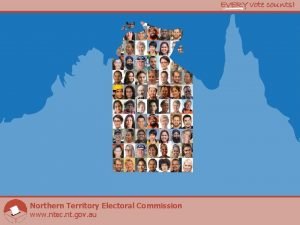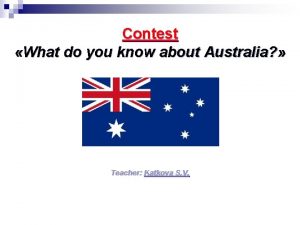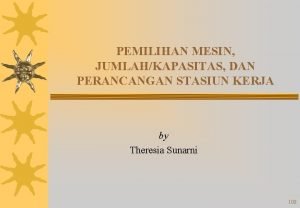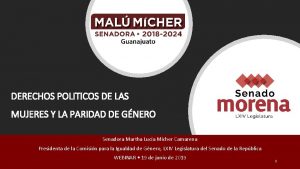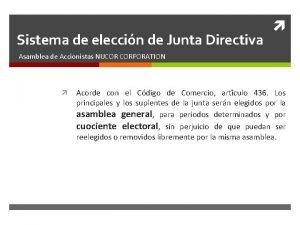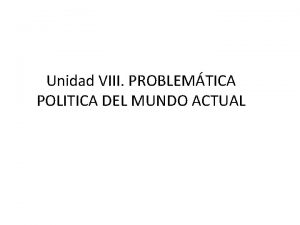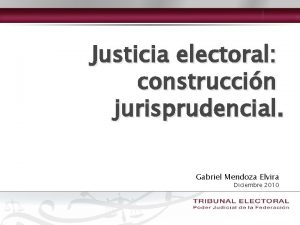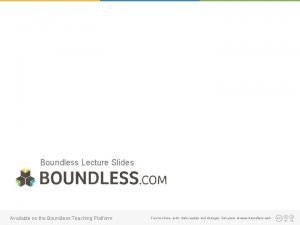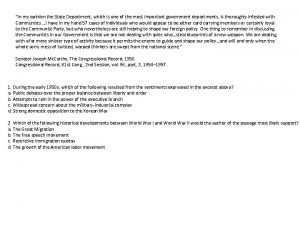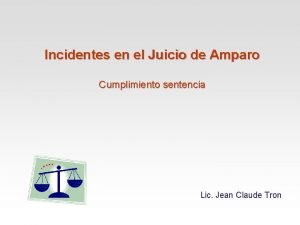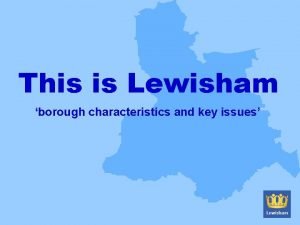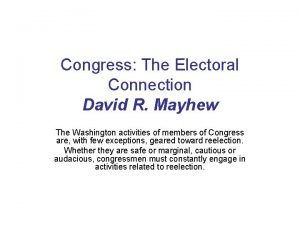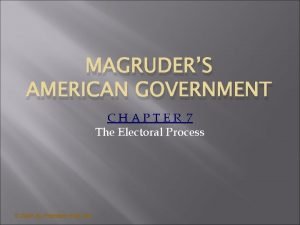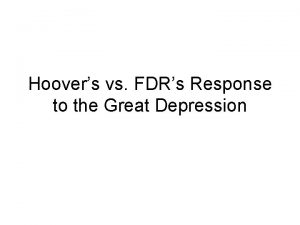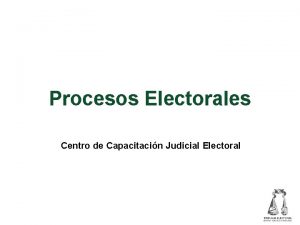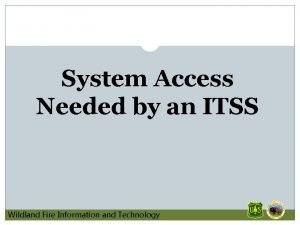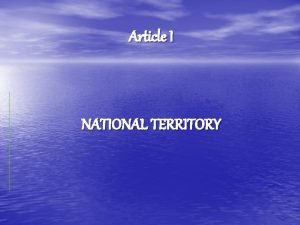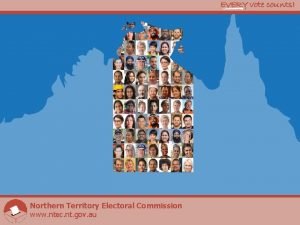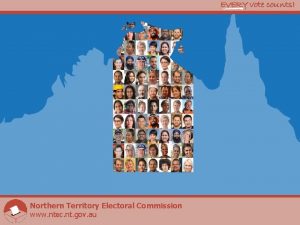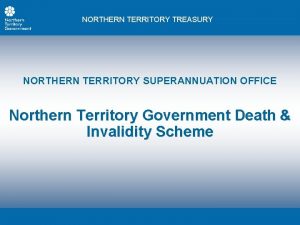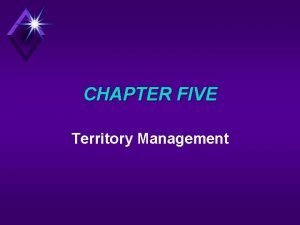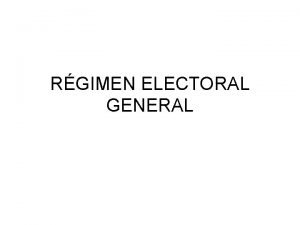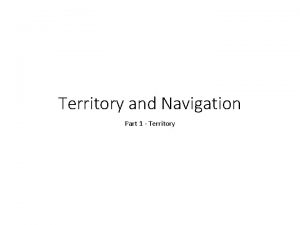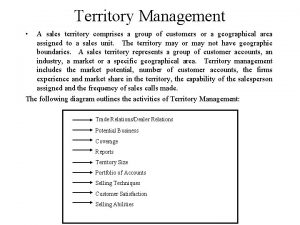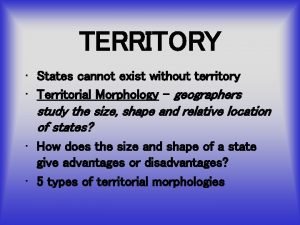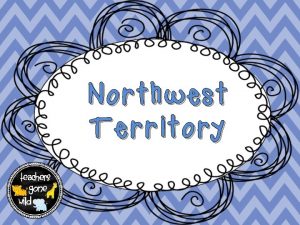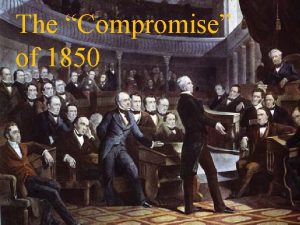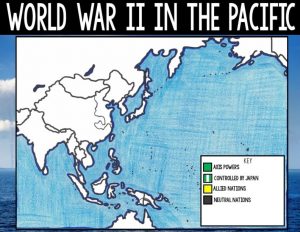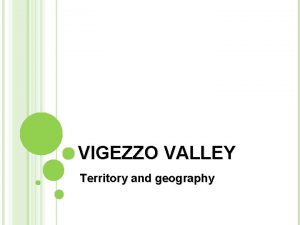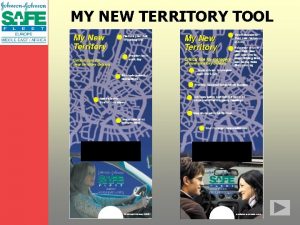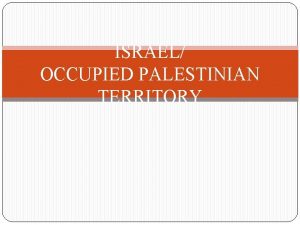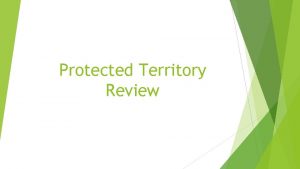Northern Territory Electoral Commission www ntec nt gov
























- Slides: 24

Northern Territory Electoral Commission www. ntec. nt. gov. au

Democracy definition Government by the people, or by their elected representatives “Government of the people, by the people, for the people” - Abraham Lincoln Northern Territory Electoral Commission www. ntec. nt. gov. au

Democracy Index 9 Australia 9. 09 Northern Territory Electoral Commission www. ntec. nt. gov. au

Democracy Index 2018 Northern Territory Electoral Commission www. ntec. nt. gov. au

Democracy Index 2019 – Full democracies Northern Territory Electoral Commission www. ntec. nt. gov. au

Democratic Structures in Australia ROANIPETSA WEPROS SEPARATION FO OF POWERS Northern Territory Electoral Commission www. ntec. nt. gov. au

Separation of Powers • Appointed by the executive • Judges • Magistrates • • Elected by the people Governor-General/Queen Members of Parliament Senators Northern Territory Electoral Commission www. ntec. nt. gov. au • • • Chosen by leader of government Governor-General/Queen Ministers Cabinet Government departments Police, customs, health inspectors

Democratic Structures in Australia HET THE UTINOCITNOTS CONSTITUTION Northern Territory Electoral Commission www. ntec. nt. gov. au

The Constitution TRUE FALSE The Constitution is a set of rules by which Australia is run The Constitution commenced 25 January, 1901 The Constitution can only be changed once parliament has passed it, and people have voted yes in a referendum The federal parliament can change the Constitution at any time Voting in constitutional referendums is compulsory in Australia People living in Territories cannot vote in constitutional referendums The Constitution allows the establishment of new states. This means the NT can become a state Australia has 2 territories, but the Constitution mostly refers to states, so people in territories have less constitutional rights The Constitution was approved by the people in a series of referendums held over 2 years There have been 44 constitutional referendums since 1901, only half have passed Only the High Court has the authority to interpret the Constitution The federal parliament cannot interfere with state law making, but can interfere in territories Northern Territory Electoral Commission www. ntec. nt. gov. au

Democratic Structures in Australia REPRESENTATIVE GOVERNMENT PENTVERTAISER MERGVENTON Northern Territory Electoral Commission www. ntec. nt. gov. au

Representative Government What is the House of Representatives? The lower house of federal parliament…. What is the Senate? The upper house of federal parliament. . . What is a Legislative Assembly A state level House of Representatives. . . What is a Legislative Council? Name usually given to upper house of state… What is the only state with no upper house? Queensland How many territories have self-government? Two How many houses of parliament in NT/ACT? One How many local govt areas are there? About 560 Which state/territory has no local govt? ACT Which levels of government are elected? All of them How many local govt areas in NT? 17 What names are used for local govt in NT? Cities, town councils, regional councils Northern Territory Electoral Commission www. ntec. nt. gov. au

Democratic Structures in Australia BISEPSELRON RESPONSIBLE MERGVENTON GOVERNMENT Northern Territory Electoral Commission www. ntec. nt. gov. au

Responsible Government System where executive is drawn from/accountable to legislative Scrutiny of Government Any activity that involves examining and challenging government Bicameralism Two houses of parliament means dual scrutiny of bills. Question Time Parliament can ask questions of government ministers Scrutiny Committees Small groups of members that investigate bills and issues in detail MPIs Discussion in parliament about a government’s actions or policies Bill debates Passage of legislation involves bills being debated by all sides Elections Governments held accountable to the people through elections Free Media Plays a role in bringing scrutiny to public attention Northern Territory Electoral Commission www. ntec. nt. gov. au

Democratic Structures in the Northern Territory Democratic structures in the NT Undemocratic structures in the NT NT has a fully elected Legislative Assembly, an elected executive and independent judiciary NT has no Constitution (which is difficult to change) only the NT (Self-Government) Act (which is easy to change) The NT (Self-Government) Act grants the NT state like (law and other decision making) powers The NT (Self-Government) Act prevents NT control over 5 normally state decision making areas (like euthanasia) Since 1977, NT electors can vote in Constitutional referendums. NT votes in Constitutional referendums are not included in the ‘majority of states’ count (only ‘majority of votes’ count) NT was part of SA from 1863 – 1911. During this time NT residents had representation in the SA Parliament. In 1911 the NT was transferred to Commonwealth control. NT had no representation in the new federal parliament. To form government a party or coalition must win 13 out of 25 seats in the NT Legislative Assembly NT had no federal representation until 1922, but this member did not have full voting rights until 1968 NT Parliament has 5 Aboriginal members (20%) which is close to the 25 - 30% of Aboriginal people in NT population NT had no local decision making authority until 1947, and then only a partially elected council until 1974. NT Parliament is almost half women, and 6 out of 9 cabinet ministers are female (highest in any Australian cabinet) The federal parliament (with 4 NT members out of 225) can overturn any decision made by NT Parliament, at any time NT Legislative Assembly and council elections are set dates every 4 years NT has 2 senators (states have 12) serving a variable 3 year term linked to House of Reps (fixed 6 year terms for states) Territorians can be actively involved by voting, submitting responses to inquiries, petitions, viewing parliament etc. Unicameral parliament – no upper house to scrutinise Northern Territory Electoral Commission www. ntec. nt. gov. au

Democratic elections 1. FREE 2. FAIR 3. OPEN 4. REGULAR 5. CONTESTED Northern Territory Electoral Commission www. ntec. nt. gov. au

Open elections • Universal suffrage • Minimal limitations on voting, full voting services • Compulsory voting Northern Territory Electoral Commission www. ntec. nt. gov. au

Fair elections • Everyone has one vote, and all votes are treated equally • All candidates are treated equally • There are laws and regulations to ensure there is no cheating in elections: • Electoral Act • Electoral Regulations • Local Government Act (c 8) • Local Government (Electoral) Regulations Northern Territory Electoral Commission www. ntec. nt. gov. au

Free elections Voters are free to choose whoever they want without fear of intimidation • Protections for voters • Secret ballot • Challenging for electronic voting Northern Territory Electoral Commission www. ntec. nt. gov. au

Voting systems § First past the post § Preferential § Proportional representation Northern Territory Electoral Commission www. ntec. nt. gov. au

First past the post • Voters just have to mark the ballot paper once, next to the candidate of their choice. • The candidate with the most votes wins. • Used for government elections in almost one third of all countries including Canada, UK, India, Indonesia and the USA. • First past the post is no longer used in Australia (replaced in 1918). Northern Territory Electoral Commission www. ntec. nt. gov. au

Full preferential voting • Voters must put a number against every candidate, in the order of their choice, starting with 1. • A candidate must get more than half the total formal votes to win (50% +1). • Used for most lower house elections in Australia (except TAS and ACT), and is a distinctly Australian system. • NT Legislative Assembly elections use optional preferential voting. Northern Territory Electoral Commission www. ntec. nt. gov. au

Proportional representation • Proportional representation is used for multi-member electorates. • Used for the federal senate, most state upper houses and many local government councils. • Voters must put a number against every candidate, in the order of their choice, starting with 1 (same as preferential). • A candidate must achieve the ‘quota’ (or proportion of formal votes) in order to win one of the positions available. Quota = Total number of formal votes Number of candidates to be elected + 1 Northern Territory Electoral Commission www. ntec. nt. gov. au +1

Counting votes • Full preferential voting – vote counting activity • Proportional representation – vote counting activity Northern Territory Electoral Commission www. ntec. nt. gov. au

Questions? For further information ntec. nt. gov. au Facebook. com/NTElectoralcommission Northern Territory Electoral Commission www. ntec. nt. gov. au @NTElec. Comm
 Northern territory electoral commission
Northern territory electoral commission Capital of australia's northern territory crossword
Capital of australia's northern territory crossword Cuerpo electoral significado
Cuerpo electoral significado Electoral college compromise 1787
Electoral college compromise 1787 Machine selection
Machine selection Flujograma de documentos electorales
Flujograma de documentos electorales Materia electoral
Materia electoral Ejemplo cuociente electoral junta directiva
Ejemplo cuociente electoral junta directiva Geografía electoral
Geografía electoral Gabriel mendoza elvira
Gabriel mendoza elvira Electoral college changes
Electoral college changes The 1964 electoral map above illustrates the
The 1964 electoral map above illustrates the Tipos de incidentes en materia electoral
Tipos de incidentes en materia electoral Lewisham electoral roll
Lewisham electoral roll Electoral connection definition
Electoral connection definition 1992 electoral map
1992 electoral map Chapter 7 the electoral process
Chapter 7 the electoral process Bodega electoral
Bodega electoral Fdrs response to the great depression
Fdrs response to the great depression Geografía electoral
Geografía electoral Defects of secondary education
Defects of secondary education Graduated commission example
Graduated commission example Ftp wildland fire
Ftp wildland fire Who was the absolute monarch of russia
Who was the absolute monarch of russia Three fold division of navigable waters
Three fold division of navigable waters
